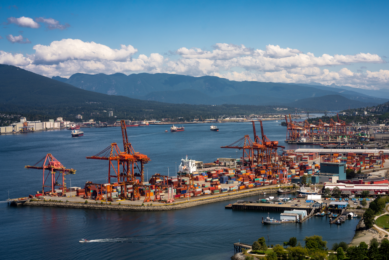More from IPVS 2010
The IPVS is plunging into the digital revolution. At this time we are still in the midst of planning and discussing many of the changes we envision. As a result I will hold off going into too much detail on some of the changes and instead, just lift the curtain ever so slightly to give a glimpse of changes that can be expected.
In a future blog, when decisions have been finalised or at least firmed up some more, I’ll go into the changes in greater detail. One way or other, however, the electronic revolution is commandeering changes as they dominate how conferences are conducted. Electronics will be a major part of what will be involved in this and future congresses. As with so much in the digital age, the changes might take a form that few of us can imagine at this time. Here’s a start:
Electronic posters
One innovation that is already decided is the institution of electronic posters to replace the galaxy of poster boards with the pinned up (sticky tape in recent congresses) posters.© These electronic posters are a marvel to behold. They are computer run and can be formulated to deliver the posters in an unbelievable variety of ways.
First off, the number of electronic stations is much, much reduced as all posters can be mounted on a computer that runs each electronic poster station. It can be decided to show (present) certain topics at certain predetermined times on a certain set of terminals while other terminals can be left with the entire complement of posters and individuals can browse through and pick out individual topics they wish to peruse. Terminals can be programmed to be interactive.
By that I mean posters do not have to be static. They can have videos or movies inserted in pictures or drawings to graphically display in active form, exactly what the presenter wants to display. This leads into options of having established poster sessions where a specific topic area is covered at a specific advertised timeslot and presenters are stationed to briefly present and discuss their posters. The possibilities are only just starting to unfold as organisers delve into the myriad of configurations that electronic posters can offer.
End of paper proceedings
It might intrigue you to learn that conferences are moving rapidly to the abandonment of paper proceedings (proceedings books). At registration, delegates are now likely, more often than not, to receive either a CD or more and more now a flash drive (also called a ‘thumb’ drive or a ‘stick’ drive, ‘memory stick’ or one of several other names), rather than a proceedings book. The arguments against these devises include:
* Delegates like to read papers prior to or during the oral presentations
* Not having the paper proceedings will deprive delegates of this opportunity
* A similar, though less compelling argument can be made for the posters
Of course the counters to the above arguments are:
* Paper proceedings are heavy, bulky and a drain on the environment.
* The books present some difficulty in transporting back home especially if the delegates are going vacationing after the congress
* Many proceedings books are left abandoned in hotel rooms after the congress
* We are moving progressively towards less paper anyway
New to Vancouver
I’ve mentioned previously that with the Winter Olympics in Vancouver in February 2010, five months prior to the IPVS, there are many new infra-structure additions appearing on the Vancouver landscape. I mentioned the Sky Train, a rapid transit transport from Vancouver international Airport to downtown Vancouver. There are many other additions. One addition that will impact IPVS directly is the new Vancouver Convention & Exhibition Centre (VCEC).
A brand new Convention Centre, the VCEC West Wing, opened in the spring of 2009. The new VCEC is right next to the previous Convention Centre (VCEC East Wing). The two are connected by ground level and above ground walkways. Adjoining the new Convention Centre is a new hotel, the Pacific Rim Hotel which is connected by walkway to the new VCEC. IPVS 2010 will be in the new VCEC.
These are a few of the innovations being introduced for IPVS in Vancouver. These and the usual conviviality and surge experienced as we meet and greet new colleagues and renew friendships established at previous IPVS Congresses all promise to deliver another splendid and unforgettable IPVS next July in Vancouver.
Stanley Park
In a previous blog I left off after introducing the Hog Jog, one of several new additions for IPVS 2010 in Vancouver, at the point where the Hog Jog was going through Stanley Park and I remarked that Stanley Park needed special attention. Here is an introduction to Stanley Park, located right in downtown Vancouver.
Stanley Park is named after Lord Stanley, Governor General of Canada in the late 1880s and early 1890s. Lord Stanley was sent to Canada from the United Kingdom during the reign of Queen Victoria. Of interest to ice hockey aficionados, the Stanley Cup, the pinnacle of excellence in achievement in the National Hockey League is named after this same Lord Stanley. The Stanley Cup has the distinction of being the oldest professional sports league trophy in all of North America, having been originally donated in 1892 by Lord Stanley himself. But I digress.
Stanley Park consists of over 400 hectares (1000 acres) of giant evergreens including majestic Cedars, some reputed to be approaching 1000 years old, Hemlock and Douglas Firs giving the forested areas a tranquil setting right adjacent to the bustling downtown. One particularly old, large Red Cedar, the Hollow Tree is, as the name implies, hollow with an opening large enough to fit a car inside. Various wildlife roam throughout the park. There are walking trails and microclimates mingled with bike paths and paved roadways for motor vehicular traffic. Stanley Park is truly magnificent and a delight to experience. There is always something happening in the park.











